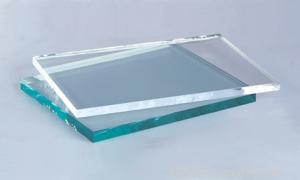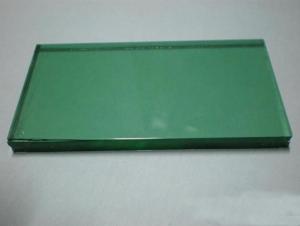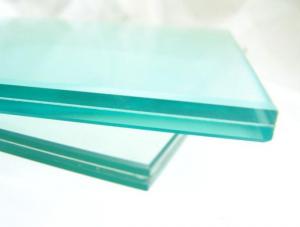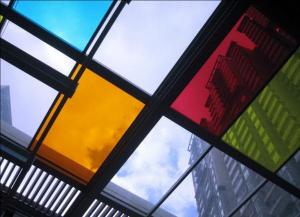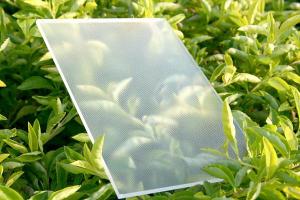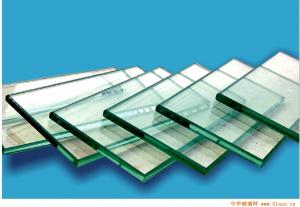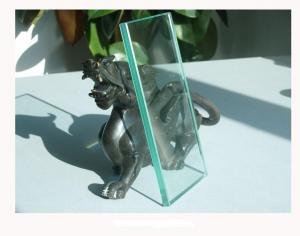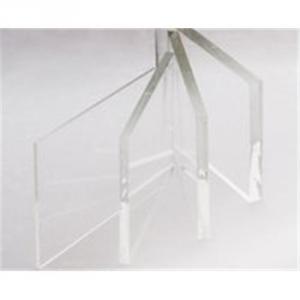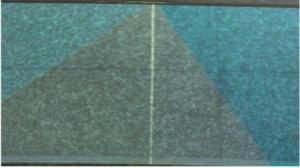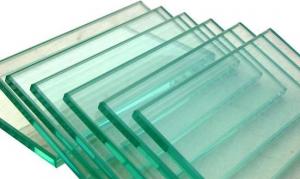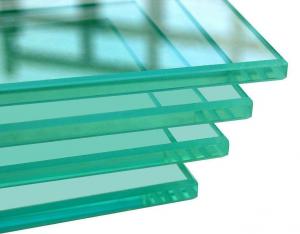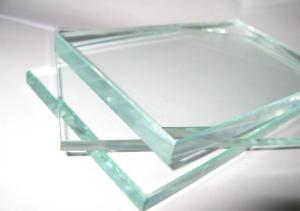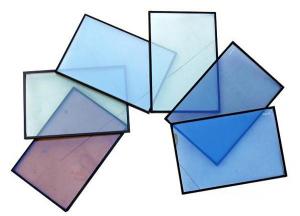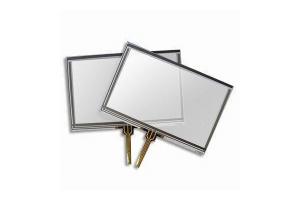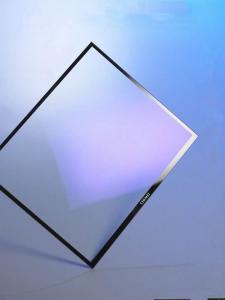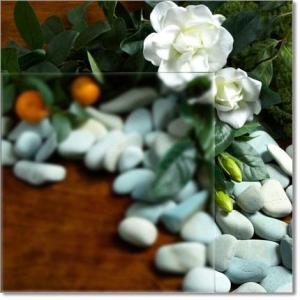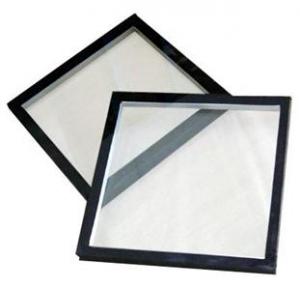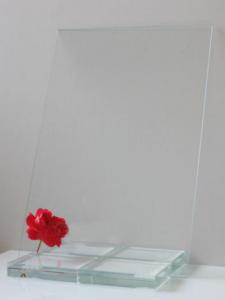Nobility And Elegance Ultra Clear Glass
- Loading Port:
- China Main Port
- Payment Terms:
- TT or L/C
- Min Order Qty:
- 10 m²
- Supply Capability:
- 10000 m²/month
OKorder Service Pledge
OKorder Financial Service
You Might Also Like
Ultra Clear Glass is a kind of low iron and transparent glass with high light transmittance(>91%), also called low iron glass. It is a high-quality, multifunctional and newly high-end glass. Being crystal clear and elegant, it is crowned as "crystal prince" of the glass family.
Features:
1. High clarity: 6% higher visible light transmittace than ordinary clear glass;
2. Nobility and elegance:with the unique lavender edges , it has the feeling of the the sapphire against the sunshine.
3. Safety: No detonating impurities/metallic and no spontaneous detonation.
4. Low UV transmittance and Environmentally friendly products: can effectively prevent UV radiation and protect interior items from fading and aging.
5. CE/SGS/REACH Certificates.
Specifications:
Thickness: 2- 25mm
Size:
920*1016mm
3660*18000mm
Customized Sizes
Applications:
Ultra Clear Glass has been widely used in various fields:
1、Interior and Exterior Decorations of Advanced Buildings: like curtain walls, glass doors of the lobby, transparent roof, glass ribs, glass suspended ceilings, partitions, walls, guard rails, stairs, etc.
2、Exhibition Hall and Showcase: in museum, exhibition hall, jewelry shop, clothing store, etc.
3、Home Appliances: as the screen protector of plasma TV, high-end visual refrigerator door, high-grade microwave oven panel, refrigerator cover, range hood cover, etc.
4、High-end Arts and Crafts, Lamps, etc.
5、Furniture and Bathroom Products.
- Q: What's the raw material for goldfish bowl?
- As for other containers: as long as you can hold water, do not fade, no smell, no harmful substances can be raised
- Q: What are the anticorrosive materials for glass fiber reinforced plastic?
- FRP is made of glass fiber and epoxy resin, is the best anti-corrosion material, regardless of category, can be anti-corrosion.FRP corrosion protection is generally stipulated in the GB50212-2002 building corrosion control project construction and acceptance specifications and CD130A19-85 hand paste FRP design technical specifications.
- Q: What are the raw materials of glass fiber reinforced plastic?
- If they are bonded together with synthetic resins, they can be made of rigid products of a fixed shape, bearing both tensile and flexural, compressive, and shear stresses.
- Q: Who has information about power plants chimneys, water glass, acid resistant concrete?
- The characteristics of water glass concrete acid: water glass acid resistant concrete with water glass as binder, sodium fluorosilicate as hardening agent, adding acid powder and acid aggregate or other additives according to a certain proportion. Features: the acid and good heat resistance, it can resist all kinds of strong oxidizing acid (such as sulfuric acid, hydrochloric acid, nitric acid) and most corrosive gases (oxygen, sulfur dioxide) erosion at high temperature (1000 DEG C) still has good acid resistance, mechanical strength and high. But this material is not resistant to hydrofluoric acid, more than 300 degrees of hot phosphoric acid and higher fatty acids or oleic acid erosion. Is a commonly used anti-corrosion material, it has a wide range of materials, acid resistance good, low cost advantages. Its disadvantages are no alkali resistance, poor impermeability and water resistance, complex construction, long maintenance period.
- Q: Glass raw materials, in addition to quartz sand, what else can be the main raw materials?
- Glass raw materials are: soda ash, limestone, quartz, the ratio is: 1:1:6
- Q: What kind of material is the glass made of?
- The chemical composition of glass is Na2SiO3, CaSiO3, SiO2 or Na2O - CaO - 6SiO2, is the main component of silicate, is an amorphous solid irregular structure. Widely used in buildings for wind and light transmission; of mixtures. There is also colored glass mixed with certain metal oxides or salts, and tempered glass made by physical or chemical methods. Sometimes some transparent plastic (such as polymethyl methacrylate) is also called organic glass.
- Q: The shell of glass steel electric cars will not be on the poor out of the glass Sizha?
- There are 2 kinds of process for making automobile shell with glass fiber reinforced plastic, 1. hand paste forming process and 2. pressing processThe choice of raw materials is reasonable, according to the operating procedures, the product is not defective, will not appear exposed fiber, it will not cause skin itchingA small number of unscrupulous manufacturers, technical level is low, Jerry built products must be betterYou can spray a layer of resin or a layer of dry adhesive tape on the exposed surface of the fiber when you encounter inferior products
- Q: What raw material is the front bumper of the car made of?
- Toughened glass is a kind of prestressed glass, in order to improve the strength of the glass, the methods commonly used in chemistry or physics, formed on the surface of glass glass under compressive stress, first offset surface stress force, so as to improve the bearing capacity of reinforced glass, its wind, cold, impact etc.. Notice that it is different from fiberglass.
- Q: What raw materials are used for glass fiber reinforced plastics? Where can I buy them?
- Glass fiber reinforced plastic is not a steel, but a composite material. Glass fiber reinforced plastic products are widely used. Most of the facilities of yachts, automobiles, water storage tanks and highways are made of glass fiber reinforced plastic products.
- Q: Samsung LCD panel information
- Landlord, you take this screen is not the LCD screen, and the other is the plasma screen.It should be a 46 inch plasma TV set.
1. Manufacturer Overview
| Location | Henan, China |
| Year Established | 1999 |
| Annual Output Value | |
| Main Markets | |
| Company Certifications | ISO9001;ISO14001;OHSMS18001 |
2. Manufacturer Certificates
| a) Certification Name | |
| Range | |
| Reference | |
| Validity Period |
3. Manufacturer Capability
| a) Trade Capacity | |
| Nearest Port | Shanghai, China |
| Export Percentage | |
| No.of Employees in Trade Department | |
| Language Spoken: | English; Chinese |
| b) Factory Information | |
| Factory Size: | Above 100,000 square meters |
| No. of Production Lines | |
| Contract Manufacturing | OEM Service Offered; Design Service Offered |
| Product Price Range | Average |
Send your message to us
Nobility And Elegance Ultra Clear Glass
- Loading Port:
- China Main Port
- Payment Terms:
- TT or L/C
- Min Order Qty:
- 10 m²
- Supply Capability:
- 10000 m²/month
OKorder Service Pledge
OKorder Financial Service
Similar products
Hot products
Hot Searches
